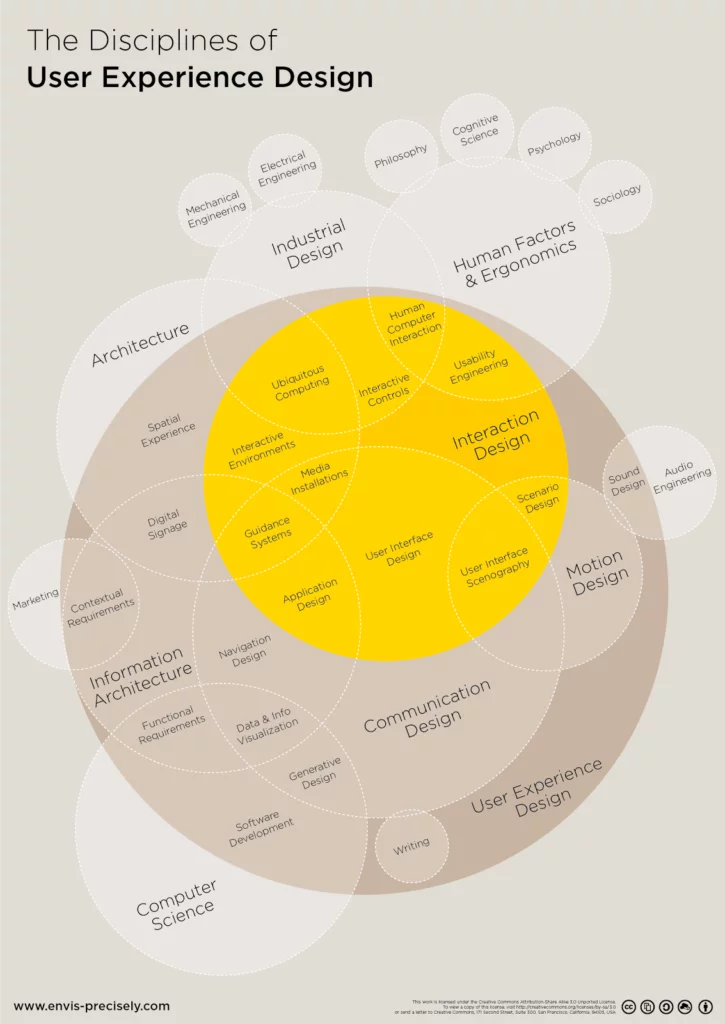User experience design is an incredibly huge, multidisciplinary and intriguing field. It shapes the items and administrations we use every day, and can represent the moment of truth the accomplishment of a business or brand.
A profession in (UX) User experience design is quick paced and testing, requiring an exceptionally various range of abilities. On the off chance that you need to break into this field, there’s bounty to learn!
In this guide, we’ll give a definitive prologue to UX plan and reveal to you all that you have to think about beginning in this energizing industry, including:
- What Is User Experience Design?
User experience design (UX) alludes to any association a client has with an item or administration. UX configuration considers every single component that shapes this experience, how it causes the client to feel, and how simple it is for the client to achieve their ideal undertakings. This could be anything from how a physical item feels in your grasp, to how clear the checkout procedure is when purchasing something on the web. The objective of UX configuration is to make simple, proficient, significant and all-round lovely encounters for the client.
“User experience design (UX) envelops all parts of the end-client’s communication with the organization, its administrations, and its items.”
— Don Norman, Cognitive Scientist and User Experience Architect
UX fashioners consolidate statistical surveying, item advancement, procedure and configuration to make consistent client encounters for items, administrations and procedures. They assemble a scaffold to the client, helping the organization to all the more likely comprehend — and satisfy — their needs and desires.
The Difference Between UX And UI Design
When discussing UX, the term (UI) plan will definitely manifest. Be that as it may, it’s essential to perceive that, notwithstanding regularly being utilized conversely, UX and UI are two distinct things.
“UX is centered around the client’s voyage to take care of an issue; UI is centered around how an item’s surfaces look and capacity.”
— Ken Norton, Partner at Google Ventures, Ex-Product Manager at Google
UI configuration isn’t equivalent to UX. UI alludes to the real interface of an item; the visual plan of the screens a client explores through when utilizing a versatile application, or the catches they click when perusing a site. UI configuration is worried about all the visual and intelligent components of an item interface, covering everything from typography and shading palettes to movements and navigational touch focuses, (for example, catches and scrollbars). You can peruse increasingly about crafted by UI originators here.
UX and UI go inseparably, and the plan of the item interface hugy affects the general client experience. Become familiar with the distinction among UX and UI plan in this guide.
UX design is all over the place: the format of a grocery store, the ergonomics of a vehicle, the ease of use of a portable application. While the expression “client experience” was first instituted by Don Norman during the 90s, the idea of UX has been around for any longer.
To comprehend the standards of UX structure, it investigates the history behind it.
- The History Of UX Design
Probably the most fundamental precepts of UX can be followed as far back as 4000 BC to the old Chinese way of thinking of Feng Shui, which centers around orchestrating your surroundings in the most ideal, agreeable or easy to understand way. There is likewise proof to propose that, as right on time as the fifth century BC, Ancient Greek developments structured their apparatuses and working environments dependent on ergonomic standards.
A complete course of events of the historical backdrop of UXIn the late nineteenth century, incredible masterminds and industrialists like Frederick Winslow Taylor and Henry Ford started coordinating essential experience structure standards into their creation forms. Set for make human work increasingly proficient, Taylor directed broad examination into the connections among laborers and their instruments — simply like UX architects today research how clients interface with items and administrations.
Another key figure in the historical backdrop of UX is modern architect Henry Dreyfuss. In his book Designing for People (1955), Dreyfuss gives an exceptionally exact portrayal of what we presently know as UX plan:
“At the point when the purpose of contact between the item and the individuals turns into a point of grinding, at that point the [designer] has fizzled. Then again, if individuals are made more secure, progressively agreeable, increasingly anxious to buy, progressively proficient — or out and out more joyful — by contact with the item, at that point the planner has succeeded.”
— Henry Dreyfuss, Industrial Engineer

In the mid 90s, intellectual researcher Don Norman joined the group at Apple as their User Experience Architect, making him the first individual to have UX in quite a while work title. He thought of the expression “user experience structure” since he needed to “spread all parts of the individual’s involvement in a framework, including mechanical plan, illustrations, the interface, the physical cooperation, and the manual.” Since at that point, every one of these regions have ventured into specializations of their own. Nowadays, there’s a developing propensity for organizations to employ for unmistakable jobs, for example, UX scientist or communication originator, to cover the entirety of the various parts of client experience.
For quite a long time, people have been trying to improve their surroundings for most extreme client comfort. Nowadays, the term UX configuration has solid computerized implications, frequently alluding to applications, sites, programming, contraptions and innovation.
- Design Disciplines: The Quadrant Model
UX is a wide umbrella term that can be split into four primary controls: Experience Strategy, (ExS), Interaction Design (IxD), User Research (UR) and Information Architecture (IA).
Graph delineating the 4 quadrants of UX plan
UX Design Disciplines: The Quadrant Model
Experience Strategy (ExS)
UX configuration isn’t just about the end client; it likewise carries immense incentive to the business giving the item or administration. Experience technique is tied in with conceiving an all encompassing business methodology, consolidating both the client’s needs and those of the organization.
Collaboration Design (IxD)
Collaboration configuration takes a gander at how the client interfaces with a framework, considering every intelligent component, for example, catches, page changes and movements. Association fashioners look to make natural plans that enable the client to easily finish center errands and activities.
Find out additional: What are UX, UI and Interaction Design?
User Research (UR)
UX configuration is tied in with recognizing an issue and planning the arrangement. This requires broad research and criticism from existing or potential clients. During the exploration stage, UX creators will dispatch studies, lead meetings and ease of use testing, and make client personas so as to comprehend the end client’s needs and goals. They accumulate both subjective and quantitative information and utilize this to settle on great structure choices. Figure out how to direct client experience investigate here.
Data Architecture (IA)
Data design is the act of arranging data and substance in an important and open manner. This is significant in helping the client to explore their way around an item. To decide the IA of some random item, data draftsmen think about the connection between various arrangements of substance. They likewise give close consideration to the language utilized and guarantee that it is both persuading and steady.
Inside these four regions, there is an entire host of sub-disciplines. As should be obvious in the realistic beneath, client experience configuration is far beyond only an instance of drawing and wireframing. It’s a multidisciplinary field, heaps of subjective science and brain science, software engineering, correspondence plan, ease of use designing and that’s only the tip of the iceberg.
A chart portraying the various orders of UX plan
Presently we should investigate how these controls make an interpretation of into the everyday work of a UX planner.

- What Does A UX Designer Do?
“How would I clarify what I do at a gathering? The short form is that I state I adapt innovation.”
— Fred Beecher, Director of UX, The Nerdery
UX architects try to make regular items, administrations and innovation as easy to use and available as could reasonably be expected. They utilize configuration thinking to accommodate the client’s wants with specialized practicality and business reasonability. The chart beneath shows the Design Thinking Process, adjusted from the d.school. The Design Thinking Process can be separated into four distinct stages: motivation, conceptualization, cycle and work.
Graph indicating the structure thinking process, from motivation and conceptualization to emphasis and article
During the motivation organize, the User experience design (UX) looks to comprehend and watch. To do this, they direct broad research and contender investigation so as to completely get a handle on the issue or challenge they are deciding to unravel. This includes meeting the individuals who are, or will be, legitimately connected with the item.
User experience design (UX) | The architect at that point utilizes this input to recognize the client’s objectives, feelings, torment focuses and practices. The entirety of this data structures client personas. The subsequent stage is to think about what these personas are attempting to achieve when utilizing a specific item, and the voyage they will take to do as such. The originator thinks about data engineering and uses different systems, for example, card arranging, to delineate client streams.
When the client streams have been resolved, the architect recognizes what steps the client needs to take to finish their ideal assignments. They will outwardly conceptualize answers for every one of these means, making wireframes and models of what the last item may resemble.
With models to hand, the UX fashioner will at that point lead convenience tests to see








